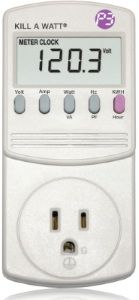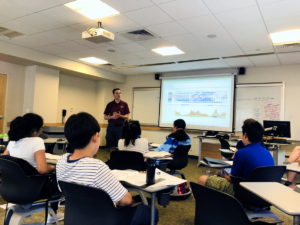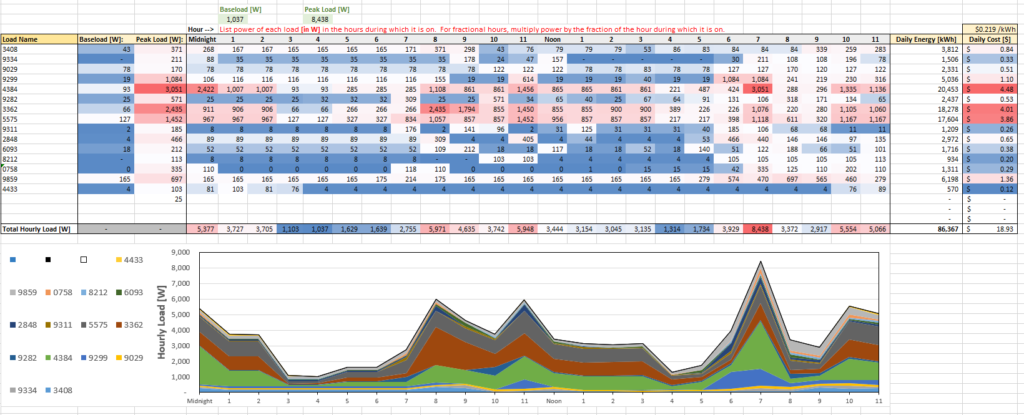 On the second day of NUSSP, in anticipation of our energy day in week two and to collect data ahead of time, students were given a homework assignment: a Bedroom Load Curve Datasheet and Instructions Handout. Each student was given a Kill-a-Watt Sensor, which allows the students to measure their personal energy use. The sensor plugs directly into a power socket, and then devices plug into the sensor. This allows you to see a variety of things; we were interested only in the idle load and the active load. The devices’ idle load is how much power it draws when it’s off/not active, which might range from nothing (which is ideal) to a lot (such as in a computer or X-Box, which needs to stay partially on even when it’s not in use). The active load is how much power the device draws when the device is turned on; the largest active loads we found were from hairdryers and air conditioners. Other devices in the house might draw more power (washing machines), however the students were only tasked with analyzing devices in their own bedrooms.
On the second day of NUSSP, in anticipation of our energy day in week two and to collect data ahead of time, students were given a homework assignment: a Bedroom Load Curve Datasheet and Instructions Handout. Each student was given a Kill-a-Watt Sensor, which allows the students to measure their personal energy use. The sensor plugs directly into a power socket, and then devices plug into the sensor. This allows you to see a variety of things; we were interested only in the idle load and the active load. The devices’ idle load is how much power it draws when it’s off/not active, which might range from nothing (which is ideal) to a lot (such as in a computer or X-Box, which needs to stay partially on even when it’s not in use). The active load is how much power the device draws when the device is turned on; the largest active loads we found were from hairdryers and air conditioners. Other devices in the house might draw more power (washing machines), however the students were only tasked with analyzing devices in their own bedrooms.
Using some math (below), the students were able to calculate how much power each device uses throughout the day; this allows us see how much total power is needed for each person, as well as to look at when during the day the most power is needed.
![]()
 On our energy day we learned what energy is, the different types, and how we (humans) can gather and harness it. Professor Mike Kane (CEE) came in to talk to the students about energy use and to go over (analyze and explain) the students’ bedroom load curve results.
On our energy day we learned what energy is, the different types, and how we (humans) can gather and harness it. Professor Mike Kane (CEE) came in to talk to the students about energy use and to go over (analyze and explain) the students’ bedroom load curve results.
We did not have enough time to graph each individual student’s load curve and overlap it, so we used an example load curve (see below) from one of Professor Kane’s classes, which amalgamated the loads of each student (from devices in their bedroom and kitchen). Professor Kane then talked about current energy production and how it relates to how we actually use our devices. In general, there are energy use spikes during the morning (people waking up) and in the evening, with lulls during the day and at night. Energy generation from coal/nuclear power plants are consistent throughout the day. However, renewable energy production throughout a day often is limited by the availability of the resource: wind energy can only be harvested when wind is blowing and solar energy can only be used when the sun is shining. Therefore, the energy grid needs to be carefully managed, with extra energy being generated (during times it’s not needed as much) being stored for the times it will be needed.


